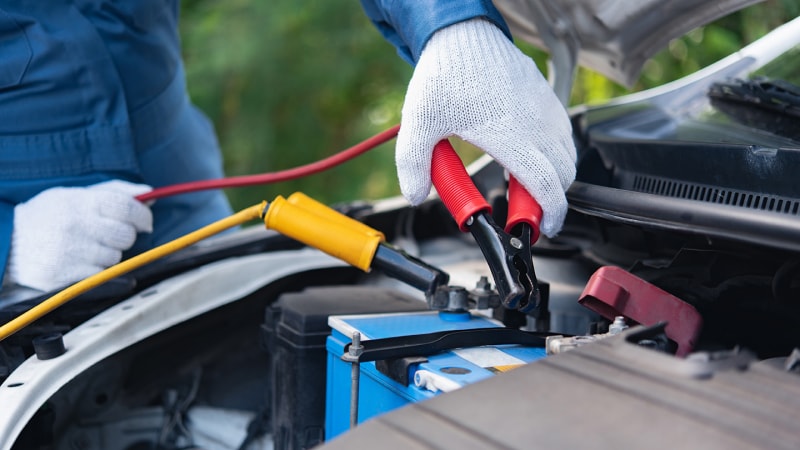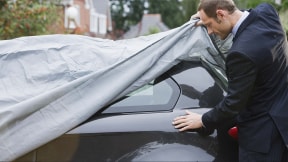How to jump-start a car with cables

Quick insights
- You can jump-start your car with cables as long as there’s nearby a functioning car.
- By connecting the clamps, you can transfer some energy to the dead battery from the working car, but there are a few other vital steps.
- A jump-start can get you back on the road, at least for a little while, but you should replace dead batteries sooner, rather than later.
With some know-how, a set of jumper cables and another working car, you may be able to jump-start a dead battery. Hopefully, this guide finds you looking to learn about jumping a battery, not the exact moment you’re troubleshooting a car that won’t start.
Materials needed to jump-start a car
To successfully jump-start a car with cables, these items are essential:
- Jumper cables: Ensure no wires are exposed and there is no other sign of damage. When using jumper cables, keep the clamps away from your body, cars and any moving parts.
- A functioning vehicle: You’ll need someone’s functioning car battery with similar voltage (12 volts) to jump-start your car with jumper cables.
Gloves and safety glasses offer additional protection.
7 steps to jump a car battery
Here are the steps to take to jump-start a car with jumper cables. Refer to your owner’s manual for specific instructions and safety information.
1. Park nose-to-nose with a functioning car
Leave enough space for you to walk comfortably between the bumpers, so you can later connect the jumper cables.
2. Turn off each car
Ensure the engines are off and cool, then engage the parking brakes.
3. Connect the cables, one clamp at a time
When you connect each clamp, you do so one at a time. Red clamps go on positive terminals, whereas one black clamp goes on a negative terminal, and the other is set away from the dead battery for electrical grounding.
Jumper cable order
When attaching the cables:
- Put a red clamp on the dead battery’s positive terminal.
- Attach the other red clamp to the working battery’s positive terminal.
- Put a black clamp on the working battery’s negative terminal.
- Attach the other black clamp away from the dead battery to an unpainted metal surface (hood, chassis, engine block).
4. Start the working car
Let it run in park for a couple minutes. The owner could opt to rev the engine lightly, but it’s not necessary.
5. Start the dead car
Wait a minute or two between each attempt, and do not try more than 3-4 times in a row. If the car doesn’t start, the battery may be beyond help, or the car could have another issue.
6. Disconnect the cables in reverse order
- Remove the black clamp from the metal surface.
- Remove the other black clamp from the working battery.
- Remove the red clamp from the battery used to jump the car.
- Remove the red clamp from the previously dead battery.
7. Idle or drive the car you jump-started
Once the car starts, you could let it run in park for 10-20 minutes or take it for a short drive. This should charge the battery.
Troubleshooting a dead car battery
To troubleshoot a dead battery, there are steps you can take by yourself. Consider having your vehicle checked by a professional if problems continue.
Visible problems
The battery terminal and cables could become corroded or loose. If the electrical components don’t work when the engine is off, the battery itself could be dead. Cars today might also have a battery warning light that appears on the dashboard if there is an issue.
Test your battery
A multimeter can be used to check the battery voltage. A full charge should register around 12 volts or more. Any less, and the battery could be dead or mean that the alternator isn’t charging the battery.
Check the age
A battery may die or be near the end of its life after five years. The lifespan depends on the usage and other components in the vehicle. Age isn’t always to blame, but it can be difficult recalling when a battery was installed—you can check the battery itself for a date stamp. Unless, of course, you vividly remember that time you were stranded on the roadside, looking for a jump-start.
In summary
Having to jump-start a car typically disrupts your travels. You’ll need a functioning car to jump-start a car with cables. Once they’re connected, you start the working car, then the dead car. Once it starts successfully, you can let it idle or drive a short distance. Visit a trusted mechanic or dealer to replace a dead battery.



